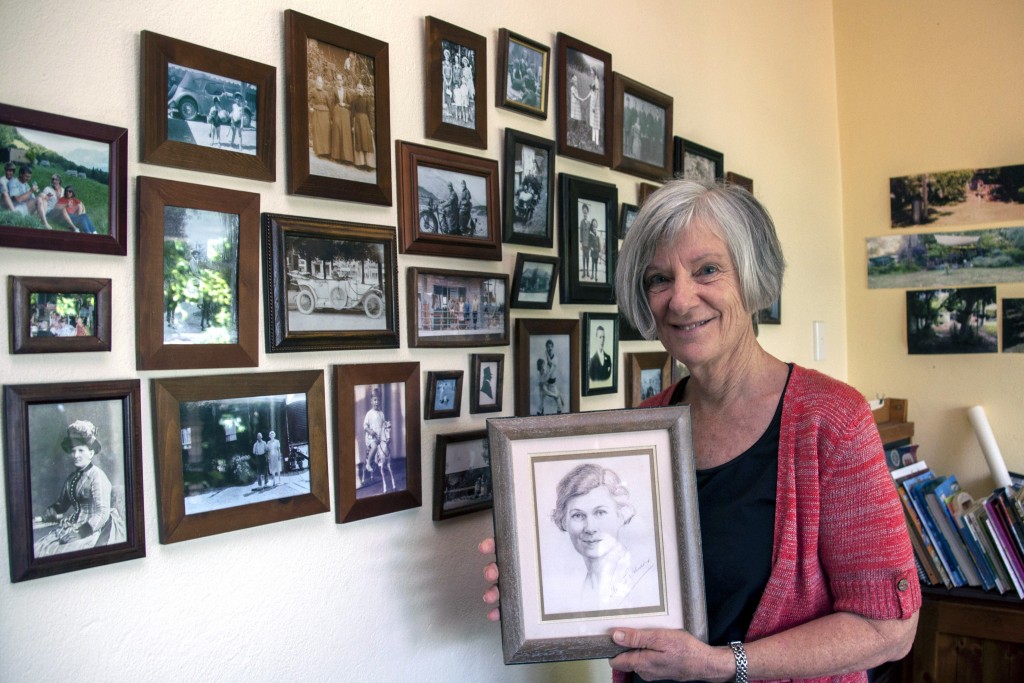
By Marco Ceccarelli
Efforts to restore the name of Perth artist Margaret Gordon Johnson to the popularity it merits have been set in motion within the Perth community.
The extraordinary talent behind the portraits of Perth Bishops John Brady, Martin Griver, Matthew Gibney and Archbishop Patrick Clune displayed within the Cathedral House, Perth is being investigated and brought to life by Ms Johnson’s granddaughter, Jill Schlatter, and secretary of the Archdiocesan Historical Commission, Odhran O’Brien.
“I have been interested in researching family history for quite some time and, interestingly enough, it was my grandmother who instilled this interest in me,” Ms Schlatter said.
“As I began to do some research and write something about her life, I noticed that she has been gradually sidelined over the years. I have been able to find her name in early dictionaries of Australian artists, yet over time it has gradually disappeared,” she added.
As she continued her investigation, Ms Schlatter was even more surprised to find that some of her grandmother’s works had, in fact, mistakenly been attributed to other artists, or had simply been accredited as “unknown” – an error she has been promptly rectifying.
“It is unfortunate that she has gradually disappeared from history as she was really a respected and well-known artist… respected enough to be commissioned by the Archdiocese to do these wonderful paintings even though she herself was a Presbyterian.”
As one of the great talents of her time, Margaret Johnson can, of course, be credited with much more than just the paintings of the four bishops of Perth.
Her signature can be found on the relief sculpture of Edith Cowan on the Clock Tower at the entrance of Kings Park, the portraits of figures such as Prime Minister John Curtin; prominent Perth Rabbi, Rabbi Freedman; Perth City Council Town Clerk, WE Bold; Lieutenant-General Gordon Bennet, a portrait within a Perth Greek Orthodox Church, and many more.
Aside from being an exceptionally talented artist, Margaret Johnson was also a mother, wife, teacher and strong leader who dedicated much of her time to the promotion of Western Australian art, both at national and international level.
“My grandmother was not just doing art,” Ms Schlatter said.
“She supported other artists and set up communal spaces and studios where art could be practised. She would also come home to cook meals and take care of the housework.”
As a result of conversations between Ms Johnson and the women with whom she shared her studio space, the Perth Society of Arts, of which she was a foundation member, was formed in 1933. Ms Johnson was also involved with the West Australian Society of Arts and, in 1943, was instrumental in setting up what was called The Studio Club, approaching the Director of the department story Foy & Gibson to request space in the store as a store for use as a gallery, to which he consented.
Following her relocation to Dunsborough in 1947, Ms Johnson was responsible for the formation of the Busselton Society of Arts.
Between 1936 and 1943, seven portraits that Ms Johnson submitted for the Archibald Prize were exhibited.
Commenting on the newly unearthed history of Margaret Johnson, secretary of the Archdiocesan Historical Commission, Odhran O’Brien, spoke of the rich historical context in which the bishops’ paintings in the Cathedral House can now be placed.
“Firstly, what is interesting is the ecumenism which surrounds this story. Here, we have a Presbyterian woman who is chronicling religious lives in Australia, not just Catholic, but also other faiths such as Judaism and the Christian Orthodox faith,” Mr O’Brien said.
“Secondly, through the work of Ms Jill Schlatter, we now have a better idea of the provenance of these paintings which have been an important part of Cathedral House and the events that have occurred within it,” he concluded.
A number of Ms Johnson’s paintings are held in the Art Gallery of Western Australia, the Parliament of Western Australia Art Collection, as well as the art collections of the cities of Busselton, Bunbury and the Shire of Plantagenet. Other works are known to be held in the art collections of Royal Perth Hospital and the City of Perth.
The Archdiocesan Historical Commission intends on applying for a grant to do restoration work on the Bishops’ paintings. For more information, contact Odhran O’Brien on 0415 104 889 or email odhran.obrien@perthcatholic.org.au.